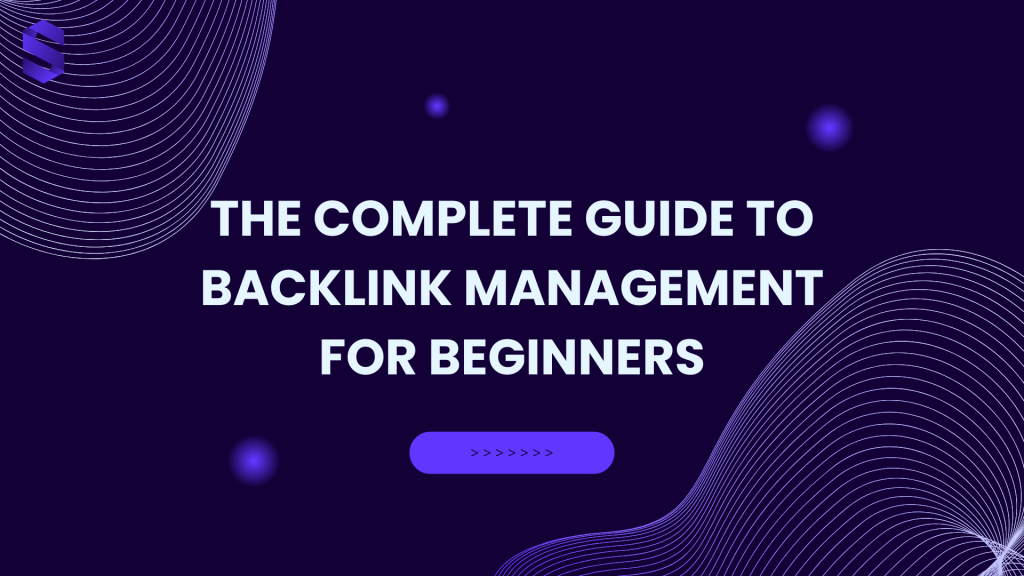Welcome to the world of backlink management! If you’re new to SEO, you might wonder why backlinks are so important. We’re about to explore why they’re key for your website’s success.
Did you know top-ranked Google pages have almost four times more backlinks than lower-ranked ones? That’s right – backlinks are like votes of confidence for your site, telling search engines you’re worth noticing.
Backlink management is more than just collecting links. It’s about building a strategy to boost your site’s authority and visibility. Whether you run a small blog or a growing business, knowing how to manage your backlinks is crucial.
In this guide, we’ll cover the basics of backlink management. You’ll learn what backlinks are and how to create a solid SEO strategy. We’ll also show you how to evaluate your current backlinks, build quality ones, and avoid toxic links that can harm your rankings.
Ready to improve your off-page optimization? Let’s start your journey to mastering link building and elevating your SEO!
Key Takeaways
- Backlinks are crucial for improving search engine rankings
- Quality matters more than quantity in backlink profiles
- Regular backlink audits are essential for maintaining a healthy profile
- Diverse backlink sources contribute to a natural link profile
- Effective backlink management can significantly boost website traffic
Understanding Backlinks and Their Importance
Backlinks are key for your website’s success. They show search engines your content is valuable and trustworthy. Let’s explore backlinks and why they matter in SEO.
What Are Backlinks?
Backlinks are links from other sites to yours. They’re like digital votes of confidence. When well-known sites link to you, it helps your authority building.
Google sees these links as signs of your content’s quality and relevance.
How Backlinks Impact SEO
Backlinks are crucial for your site’s SEO. They help build link equity, which is the value passed through links. Good backlinks can really boost your search rankings.
In fact, studies show that 96% of top Google sites have over 1,000 backlinks.
Types of Backlinks
Not all backlinks are the same. Each type affects your SEO differently:
- Dofollow: These are the most valuable for SEO.
- Nofollow: They don’t help with SEO but can still bring visitors.
- Sponsored: Used for paid links to keep things clear.
- UGC: Shows links from user-generated content.
Doing link profile analysis helps you see what backlinks you have. It also shows where you can get better.
| Backlink Type | SEO Value | Traffic Potential |
|---|---|---|
| Dofollow | High | High |
| Nofollow | Low | Moderate |
| Sponsored | Low | Variable |
| UGC | Low | Variable |
“Quality backlinks are the cornerstone of effective SEO strategy, enhancing your site’s authority and visibility in search results.”
The Basics of Backlink Management
Backlink management is key to your website’s success. Over 90% of top sites have backlinks. This shows how important it is to get good at it.
What Is Backlink Management?
It’s about watching and improving links to your site. You need to get links, reach out, and check them often. This helps your site rank better.
Why Is It Crucial for Your Website?
Good backlink management keeps your site strong online. Search engines like sites with quality links. Bad links can hurt your site.
Key Metrics to Monitor
Watch these key things for good backlink management:
- Domain Authority (DA): Look for sites with a DA of 80 or more.
- Anchor Text: Keep your anchor text varied and relevant.
- Link Growth: Watch for steady growth, not sudden jumps.
- Link Quality: Get quality links over many.
65% of SEO pros use guest blogging for links. Use these tips and check your links often. This keeps your site strong online.
How to Evaluate Your Current Backlink Profile
Checking your backlink profile is very important for your website’s SEO. A good backlink analysis shows you what’s good and what’s not for search engines.
Tools for Backlink Analysis
Many SEO tools can help you check your backlinks. Some popular ones are:
- Google Search Console
- Ahrefs
- Moz
- SEMrush
These tools give you important info about your backlinks and more. Think about your budget and what you need before picking a tool.
Identifying Quality vs. Low-Quality Backlinks
It’s important to know the difference between good and bad backlinks. Good links come from trusted sites in your field. Bad links can hurt your SEO.
| Quality Backlinks | Low-Quality Backlinks |
|---|---|
| Relevant to your industry | Unrelated to your content |
| From authoritative sites | From spammy or low-authority sites |
| Natural anchor text | Over-optimized anchor text |
| Placed within content | Found in footers or sidebars |
Having a diverse backlink profile is key. Aim for a mix of dofollow and nofollow links. Try for 60% dofollow and 40% nofollow.
Doing regular backlink audits is a good idea. Use SEO tools to keep an eye on your backlinks. Then, take steps to fix or remove bad links that could lower your rankings.
Developing a Backlink Strategy
Creating a solid backlink strategy is key to improving your website’s search engine rankings. Let’s explore how to set clear goals, research competitors, and find backlink opportunities.
Setting Clear Goals
Start by defining what you want to achieve with your backlink strategy. Do you want to boost your domain authority, increase organic traffic, or improve rankings for specific keywords? Setting measurable goals helps track your progress and adjust your strategy as needed.
Researching Your Competitors
Competitive analysis is crucial for developing an effective backlink management strategy. Study your competitors’ backlink profiles to identify gaps and opportunities in your own strategy. Tools like Ahrefs or SEMrush can provide valuable insights into your competitors’ link-building efforts.
| Competitor | Domain Rating | Total Backlinks | Referring Domains |
|---|---|---|---|
| Competitor A | 65 | 15,000 | 2,500 |
| Competitor B | 58 | 12,500 | 1,800 |
| Your Website | 52 | 9,000 | 1,200 |
Finding Backlink Opportunities
Identifying backlink opportunities is essential for strategic link building. Look for industry-specific directories, relevant blogs, and authoritative websites in your niche. Guest posting, broken link building, and creating shareable content are effective ways to earn quality backlinks.
Remember, the key to successful backlink management is focusing on quality over quantity. Aim for high-quality, relevant backlinks that will boost your website’s authority and drive targeted traffic to your site.
“Creating valuable and shareable content is the foundation of a successful backlink strategy.”
By setting clear goals, analyzing competitors, and actively seeking backlink opportunities, you’ll be well on your way to improving your website’s SEO performance and driving user engagement.
Building Quality Backlinks
Getting good backlinks is key to bettering your website’s ranking. Let’s look at smart ways to get valuable links and grow your online presence.
Guest Blogging and Outreach
Guest blogging is a strong link earning method. Look for sites with a Domain Rating (DR) of 50 or more. These links show search engines your content is reliable.
It’s not just about getting many links. Aim for sites with lots of visitors to show they’re credible.
Utilizing Social Media
Social media is key in getting links. Talk to your followers and share great content to get more backlinks. Did you know over 50% of marketers love visual content?
Make infographics or charts to get more people to link to you.
Creating Shareable Content
Good content is the heart of link building. Make unique, top-notch resources that others want to link to. Here are some ideas:
- Make detailed guides or tutorials
- Do original research and share it
- Design cool infographics
- Build free tools or resources for your field
Remember, 94% of marketers think about how their shared info will help others. By focusing on value, you’ll attract good backlinks and boost your SEO.
Monitoring Your Backlinks
It’s important to watch your backlinks to keep your SEO healthy. Regular backlink monitoring lets you see how your link-building is going. It also helps you find problems before they hurt your rankings.
Importance of Regular Backlink Audits
Backlink audits are key for SEO success. They help you:
- Find new and lost links
- Spot bad backlinks
- See how your link-building is doing
- Know your website’s authority
By doing regular audits, you learn a lot about your link profile. This helps you make better choices for your SEO plan.
Tools for Tracking Backlink Changes
There are many tools for tracking links and SEO:
| Tool | Key Features | Free Plan |
|---|---|---|
| Ahrefs | Big index of live backlinks, detailed insights | Monitor 10 backlinks, 2 domains per request |
| Semrush | Backlink Audit tool, finds bad links | Limited features available |
| Moz Pro | Link Explorer, Spam Score, Domain Authority | Limited free features |
These tools help you keep an eye on backlink changes. They let you check link quality and make smart SEO choices.
Remember, managing backlinks is a constant job. Always check your backlink profile, fix problems fast, and keep getting good links. This will help your website’s authority and rankings.
Dealing with Toxic Backlinks
Toxic backlinks can hurt your website’s SEO. They often come from bad sources. A study by Backlinko shows top Google sites have more backlinks. But, having lots of links doesn’t always help.
The Easy Branches website had many links but lost all traffic in two years.
Identifying Harmful Backlinks
To find toxic backlinks, watch for these signs:
- Links from irrelevant websites
- Unnatural anchor text
- Referring domains with too many external links
- Old domains with low authority scores
Use tools like Google Search Console or SEO platforms for audits. Check if the linking pages are good. Also, watch the anchor text for signs of trouble.
How to Disavow Toxic Backlinks
Once you find bad links, it’s time to clean up. The disavow tool is key. It tells search engines to ignore these links. But, use it right to avoid SEO problems.
| Toxicity Level | Score Range | Action |
|---|---|---|
| Toxic | 60-100 | Disavow immediately |
| Potentially toxic | 45-59 | Monitor closely |
| Non-toxic | 0-44 | No action needed |
Negative SEO can harm your site with bad links. Keep an eye out and check your backlinks often. This helps keep your site safe and ranked well.
Keeping Up with Backlink Trends
The world of SEO is always changing. To stay ahead, you need to keep up with the latest SEO updates and algorithm changes. This helps you adjust your link building strategy for better results.
Staying Informed on SEO Changes
Keeping track of SEO updates is key to maintaining a strong backlink profile. Follow industry blogs, join forums, and attend webinars to stay in the loop. Google’s Search Console is a valuable tool, providing insights on your backlinks and site performance.
Adapting Your Strategy to New Algorithms
As search engines evolve, so should your approach to link building trends. Focus on creating high-quality content that naturally attracts backlinks. Build relationships with influencers and bloggers in your industry to earn valuable links.
| Trend | Impact on Backlinks | Action Item |
|---|---|---|
| Content Quality | Higher quality content attracts more natural backlinks | Create in-depth, informative content |
| Mobile-First Indexing | Mobile-friendly sites may earn more backlinks | Ensure your site is responsive |
| User Experience | Sites with good UX tend to retain backlinks | Improve site speed and navigation |
Remember, quality trumps quantity in backlink building. Aim for relevant, authoritative links that boost your site’s credibility. By staying informed and adapting to new algorithms, you’ll build a strong and lasting backlink profile.
Common Backlink Management Mistakes to Avoid
Managing backlinks well is key for your website’s success. Many beginners make link building mistakes that hurt their SEO. Let’s look at some common mistakes and how to avoid them.
Focusing Solely on Quantity
One big mistake is focusing only on getting lots of backlinks. It’s tempting to get as many as you can. But, search engines like quality, relevant links from trusted sites. Aim for a mix of good backlinks to help your SEO and make your site more visible online.
Neglecting Anchor Text Variations
It’s important to vary your anchor text. Using the same exact-match keywords too much can look bad to search engines. Mix up your anchor text with branded, partial-match, and generic phrases. This shows search engines your site is real and relevant.
Ignoring Niche Relevance and Authority
Relevance in SEO matters for your backlinks too. Getting links from sites in your niche or related fields is key. Links from high-authority sites in your field can really help your SEO. Don’t forget about smaller, relevant sites; they can give you valuable links.
| Mistake | Impact | Solution |
|---|---|---|
| Focusing on quantity | Poor SEO results, potential penalties | Prioritize quality links from authoritative sources |
| Neglecting anchor text variations | Unnatural link profile, reduced SEO effectiveness | Use diverse anchor text types |
| Ignoring niche relevance | Decreased SEO impact, less targeted traffic | Seek links from relevant, authoritative sites in your industry |
Avoid these common mistakes and focus on effective backlink strategies. This will help you build a strong link profile. It will improve your SEO and bring more targeted traffic to your site.
Conclusion: Mastering Backlink Management for Success
Backlink management is key for SEO success. Focus on quality, not just quantity. This improves your search visibility and brings more visitors to your site.
Remember, good content distribution helps reach your audience. It also builds valuable backlinks.
Key Takeaways for Beginners
First, learn about the value of quality backlinks. Use tools like Moz’s Link Explorer and SEMrush to check authority. Building personal connections is important.
Don’t be afraid to try new things like finding broken links. Backlinks from trusted sites are more powerful. So, aim for the best!
Encouragement for Continuous Learning
SEO keeps changing, and so should your strategy. Keep up with updates and adjust your plan. Always check and improve your backlink profile.
With hard work and creativity, you’ll get better at backlink management. Your website’s authority will grow.
Backlinks are a crucial part of organic growth, but they work best when combined with high-quality content. Let Startup Content help you create engaging, SEO-optimized content that naturally attracts links and boosts your rankings. Ready to scale your content strategy? Let’s talk!
FAQ
What are backlinks and why are they important?
Backlinks are links from other sites to yours. They show people trust your site. Google sees them as votes for your site. This can help your site rank better in searches.
How do I manage my website’s backlinks effectively?
To manage backlinks well, you need to control and improve links to your site. Remove bad links and add good ones. Use tools to check which links are found by search engines.
Regularly check your backlink profile. Use tools for analysis. Aim for natural, high-quality links from trusted sites.
What tools can I use for backlink analysis?
Tools like Moz, Google Search Console, Ahrefs, and Linkody help with backlink analysis. Think about your budget and what you need. Free tools like Google Search Console have useful features. Paid tools offer more detailed info.
How can I build quality backlinks?
Build quality backlinks by guest blogging and creating shareable content. Use social media too. Make content that people want to link to. Avoid paid links and sites that don’t match your content.
What are toxic backlinks and how do I deal with them?
Toxic backlinks harm your site’s SEO. They come from bad sources. Use tools to find them and Google’s Disavow Tool to tell search engines to ignore them.
But be careful with disavowing links. Wrong use can hurt your SEO.
How often should I conduct a backlink audit?
Do backlink audits often to keep your site healthy. The frequency depends on your site’s size and link rate. Do a full audit every quarter. For big sites or active link builders, check monthly.
What metrics should I monitor in my backlink profile?
Watch link source, anchor text, and link authority. Also, check where links are placed and if they’re relevant. Look at the number of backlinks and the sites’ domain authority. These metrics show your backlink health.
How can I stay updated on backlink trends and SEO changes?
Follow SEO blogs and attend webinars. Join SEO communities and watch for Google updates. Keep your strategies fresh with new info and best practices.
What are some common mistakes in backlink management?
Don’t just focus on the number of links. Pay attention to link quality and relevance. Avoid buying links or using schemes. These can get you penalized and hurt your SEO.
How do I develop an effective backlink strategy?
Start by setting goals and studying your competitors’ links. Use tools like OpenLinkProfiler to check your backlink health. Look at domain rank and backlink numbers. Compare to competitors to find areas to improve and opportunities.








